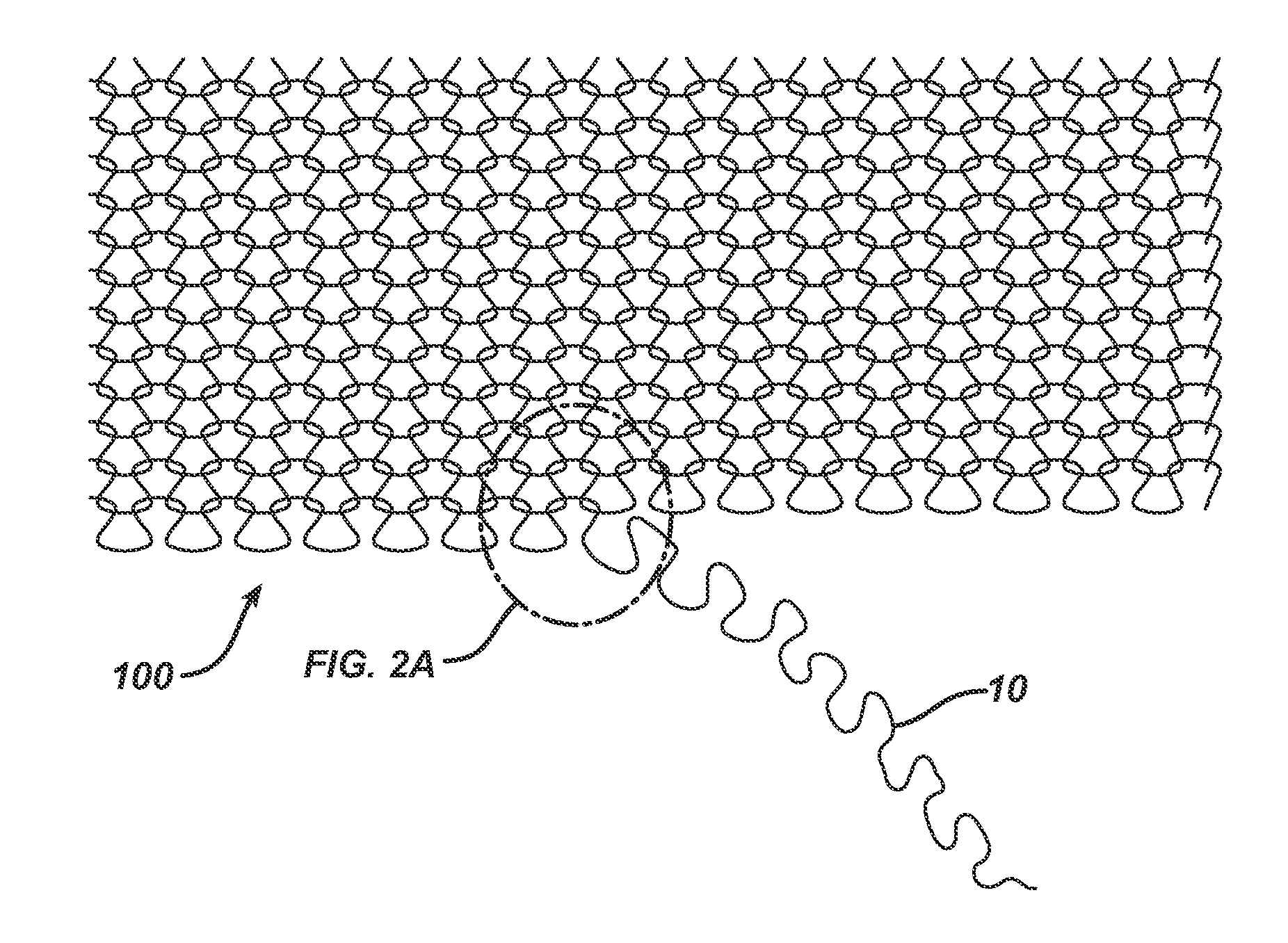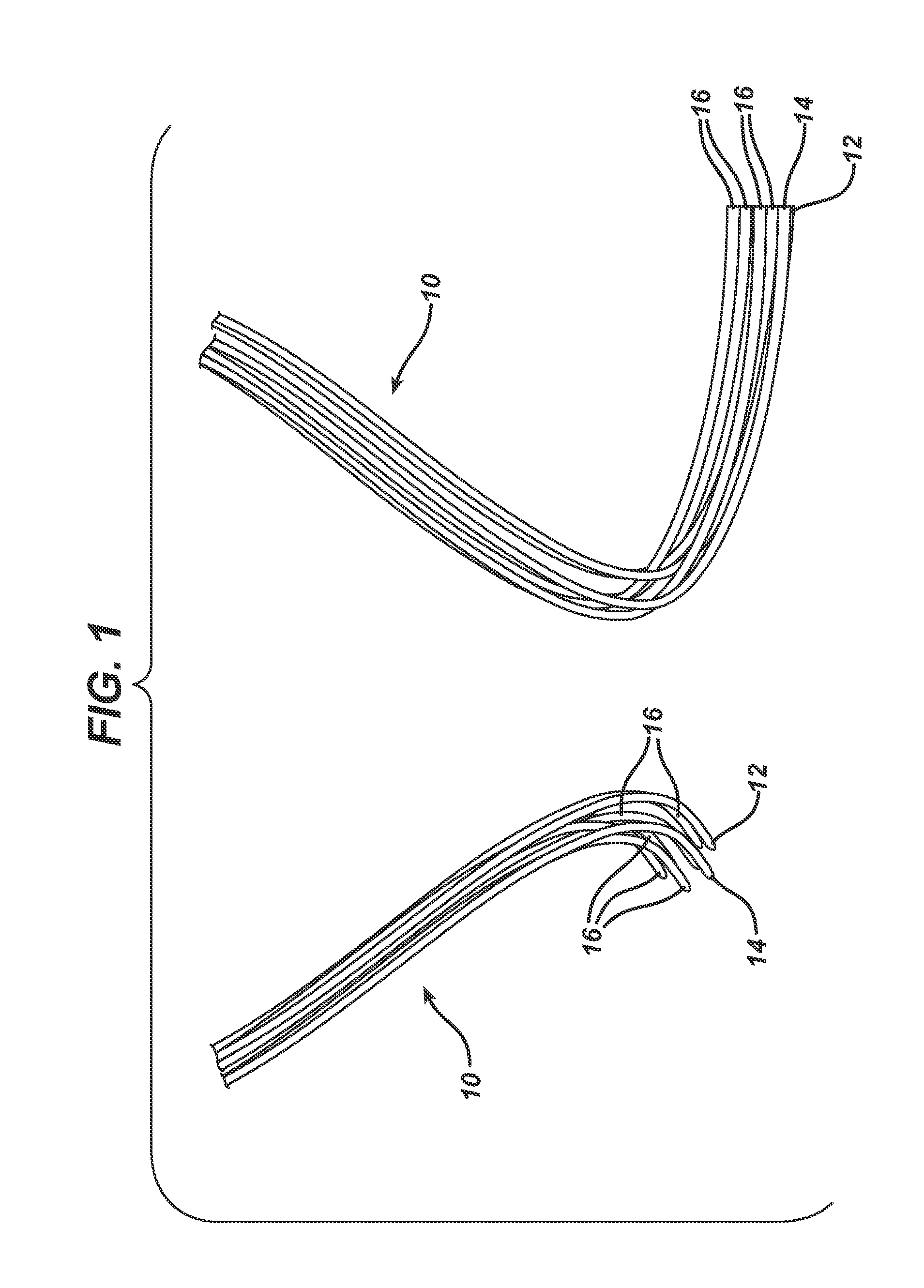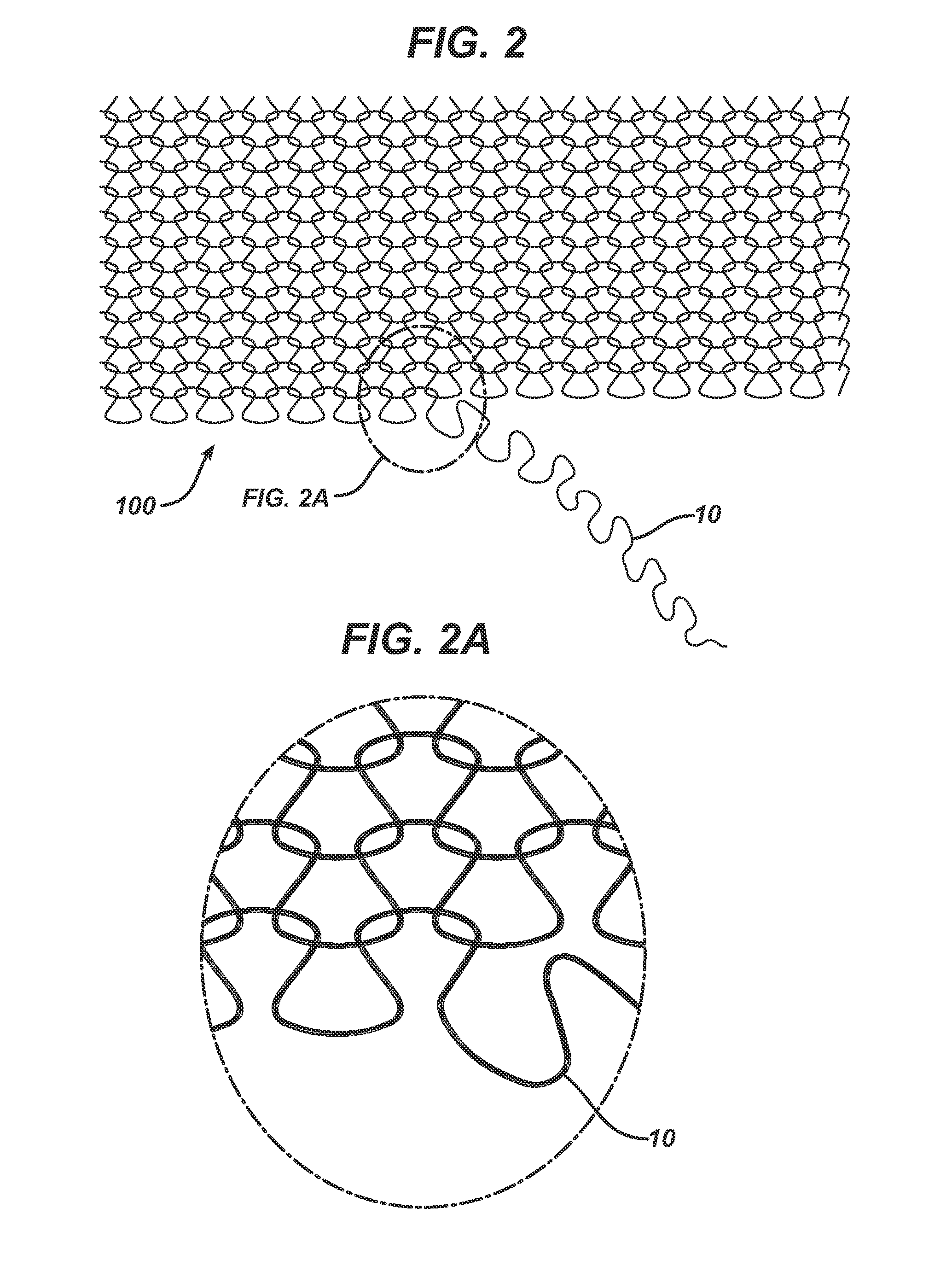Randomly Uniform Three Dimensional Tissue Scaffold of Absorbable and Non-Absorbable Materials
a three-dimensional tissue and absorbable material technology, applied in the field of implantable scaffolding devices, can solve the problems of affecting reducing the elasticity of the tissue, so as to achieve the effect of greater and beneficial tissue ingrowth
- Summary
- Abstract
- Description
- Claims
- Application Information
AI Technical Summary
Benefits of technology
Problems solved by technology
Method used
Image
Examples
example 1
Testing of Material after Implantation of 7, 14 and 28 Days
[0113]A study was conducted to test pullout force of the inventive material after implantation into rabbits. Samples of the inventive material (including fibers of polypropylene, polyglactin 910 and polydioxanone processed using a heating gap of 2.35 mm) and a control material (Gynemesh®, a non-absorbable polypropylene soft mesh implant) were implanted into rabbits. Two different sized implants were used for each of the inventive material and the control. The “small” implant was a 1.5 cm×1.0 cm sheet covered by a 1.0 cm×1.4 cm polyethylene sheath so that a 0.5 cm×1.0 cm section was uncovered. The “large” implants were sized to be 2.0 cm×1.0 cm, covered by a 1.0 cm×1.4 cm polyethylene sheath so that a 1.0 cm×1.0 cm section was uncovered. The sheath and implantable materials were ultrasonically welded. The sheath blocked or limited tissue ingrowth above the tissue plane and provided a place to grip the construct for testing af...
example 2
Testing of Area Weight, Non-Absorbable Material Amount, and Strength of Materials
[0121]Preparation of Initial Woven Structures
[0122]Three implantable materials were prepared, each with varying amounts of absorbable and non-absorbable materials. All knitting was conducted using Alveolar Tamponade processing parameters except for updated loop sizes for flat knitting determined pre-trial and shown below. For Alveolar Tamponade, two of the same round knitted tubes (socks) were produced first. Both tubes were then un-knitted in parallel and the resulting kinked filament yarn was flat knitted as an initial loose woven structure. The filaments used to make the materials included Vicryl®, which was dyed to show a purple color, PDS and polypropylene. Sock A was made with a first absorbable material and a second absorbable material. Sock B was made with a first absorbable material, a second absorbable material, and a first non-absorbable material. Sock C was made with a first absorbable mater...
example 3
Porosity and Stiffness Testing
[0141]Inventive structures were prepared and tested for porosity and for bending strength, or stiffness. The inventive structure used for this example included vicryl, polypropylene and PDS in a ratio of 5 parts (by weight) vicryl, 1 part polypropylene (by weight) and 1 part PDS (by weight). The initial loose woven structure was prepared, and was subjected to a first heating at 103° C. in a 1.5 mm gap. The initial heated structure was then subjected to a second heating at 105° C. in a 0.9 mm gap, providing the final resulting device. The resulting device was substantially flat and had a board-like shape.
[0142]Stiffness of the device was measured using a three-point bending stiffness test, specifically using a Zwick Roell tensile test. For this testing, a trapeze shaped indenter was pressed onto a test section of the inventive device, measuring about 50 mm×50 mm, where the device was placed over a 12.5 mm gap. The gap allowed the test section to be press...
PUM
| Property | Measurement | Unit |
|---|---|---|
| Temperature | aaaaa | aaaaa |
| Temperature | aaaaa | aaaaa |
| Temperature | aaaaa | aaaaa |
Abstract
Description
Claims
Application Information
 Login to View More
Login to View More - R&D
- Intellectual Property
- Life Sciences
- Materials
- Tech Scout
- Unparalleled Data Quality
- Higher Quality Content
- 60% Fewer Hallucinations
Browse by: Latest US Patents, China's latest patents, Technical Efficacy Thesaurus, Application Domain, Technology Topic, Popular Technical Reports.
© 2025 PatSnap. All rights reserved.Legal|Privacy policy|Modern Slavery Act Transparency Statement|Sitemap|About US| Contact US: help@patsnap.com



